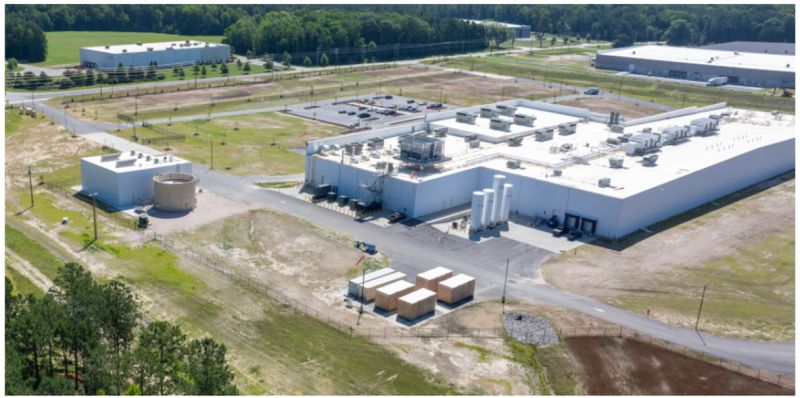

Climate Bonds Initiative launches first certification criteria for alternative proteins
The Climate Bonds Initiative has launched the world’s first certification framework for alternative proteins, offering a new benchmark for aligning investments in the food sector with global climate goals. Announced on 3 April 2025, the Alternative Proteins Criteria provide a science-based tool to guide sustainable finance toward an industry expected to play a key role in the transition to a low-emissions food system.
Developed under the Climate Bonds Standard, the new Criteria establish eligibility requirements for certifying investments in alternative proteins, including wholefood plant- and fungi-based products, fermentation-derived ingredients, cultivated meat, and blended formats. The framework is applicable to a wide range of financial instruments, including green bonds and sustainability-linked debt, helping investors and issuers identify projects with verifiable climate mitigation benefits.
According to the Climate Bonds Initiative, livestock agriculture accounts for 60% of agrifood system emissions and contributes between 2% and 20% of total global greenhouse gas emissions, while supplying just 17% of global calories and 38% of protein. The organization argues that replacing conventional meat and dairy with alternative proteins represents one of the most effective strategies for reducing emissions within the food sector.
“Livestock production places enormous strain on ecosystems and the climate, yet delivers a relatively small share of global nutrition,” said India Langley, Sustainability Analyst for Agri Food at the Climate Bonds Initiative. “The Alternative Proteins Criteria are the first of their kind in the market, providing a unique framework for both use-of-proceeds and sustainability-linked debt. With the alternative proteins market projected to reach US$1.1 trillion by 2050, these Criteria offer a critical tool to help scale up the necessary financing for sustainable agrifood system transformation.”
The framework has been designed to promote investments that directly support climate mitigation by focusing on three main levers: scaling production, encouraging market substitution, and improving production processes and sourcing practices. The Criteria require that funded activities demonstrate measurable environmental benefits, including lower greenhouse gas emissions and reduced land and water use compared to conventional livestock agriculture.
Rosie Wardle, Co-founder of Synthesis Capital and a member of the Criteria’s Technical Working Group, emphasized the importance of financial tools that can accelerate investment into this space. “In assessing sustainability in the food system, alternative proteins are one of the most impactful climate mitigation solutions,” said Wardle. “We must catalyze more capital into this sector to scale up the industry and to ensure the resilience of our food system, as without these solutions we cannot feed our growing global population within planetary boundaries.”
The Criteria were developed with input from a Technical Working Group comprising sustainability experts, researchers, and investors. The final framework reflects feedback from stakeholders and incorporates lifecycle assessment data and sector-specific thresholds to determine eligibility. It also includes guidance on blended products and transitional technologies that may play a role in bridging the shift from conventional to alternative protein systems.
In addition to its focus on emissions reductions, the Criteria also aim to encourage a more equitable distribution of protein sources globally. Aditi Mukherji, of the Climate Change Impact Platform and another member of the Technical Working Group, noted the contrasting protein consumption patterns between countries and the need for balanced solutions.
“While animal-sourced foods offer essential protein for children’s growth, overconsumption in high-income countries harms health, biodiversity, and the climate,” said Mukherji. “Meanwhile, intake in low- and middle-income countries remains below optimal levels but is rising rapidly with increasing incomes. Alternative proteins present a sustainable, high-protein solution. The Climate Bonds Initiative’s Alternative Protein Criteria comes at a critical time, aiming to channel green investment into this growing sector.”
By offering a recognized, science-backed certification scheme, the Climate Bonds Initiative hopes to provide investors with the confidence needed to support the next generation of food production systems. The Criteria are part of a broader effort by the organization to expand its coverage across all high-emission sectors, ensuring that capital flows align with the goals of the Paris Agreement and the transition to a net-zero global economy.
The launch follows similar frameworks for sectors including energy, buildings, transport, and agriculture. With the addition of alternative proteins, the Climate Bonds Standard now covers a wider share of global emissions, offering a comprehensive approach to sustainable finance.
In parallel with the Criteria release, the Initiative will offer implementation guidance and investor briefings to support the rollout of the new certification system. This includes technical documentation, environmental thresholds, and use case examples to help issuers structure green finance products that meet the new standards.
Langley said the timing of the launch reflects both market readiness and growing urgency. “We are seeing increased demand from institutional investors to decarbonize their portfolios, and food systems are a key piece of that puzzle,” she said. “With these Criteria, we are giving the market a clear and credible pathway to invest in climate-positive protein solutions.”
If you have any questions or would like to get in touch with us, please email info@futureofproteinproduction.com






